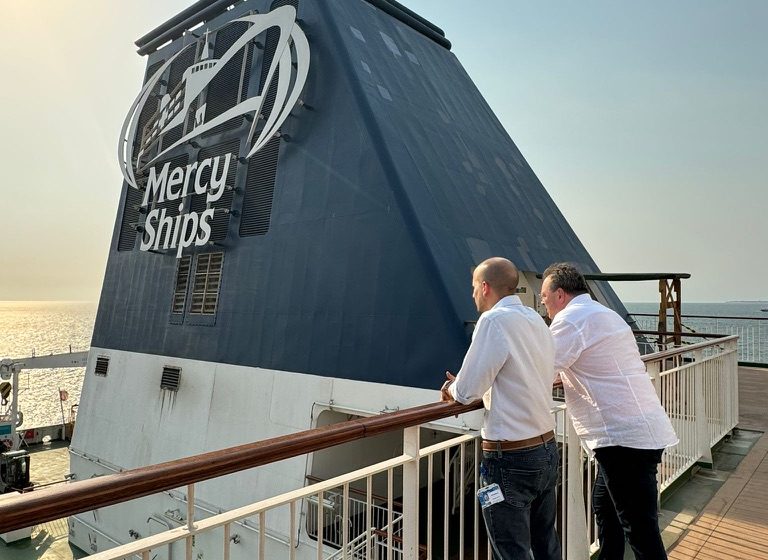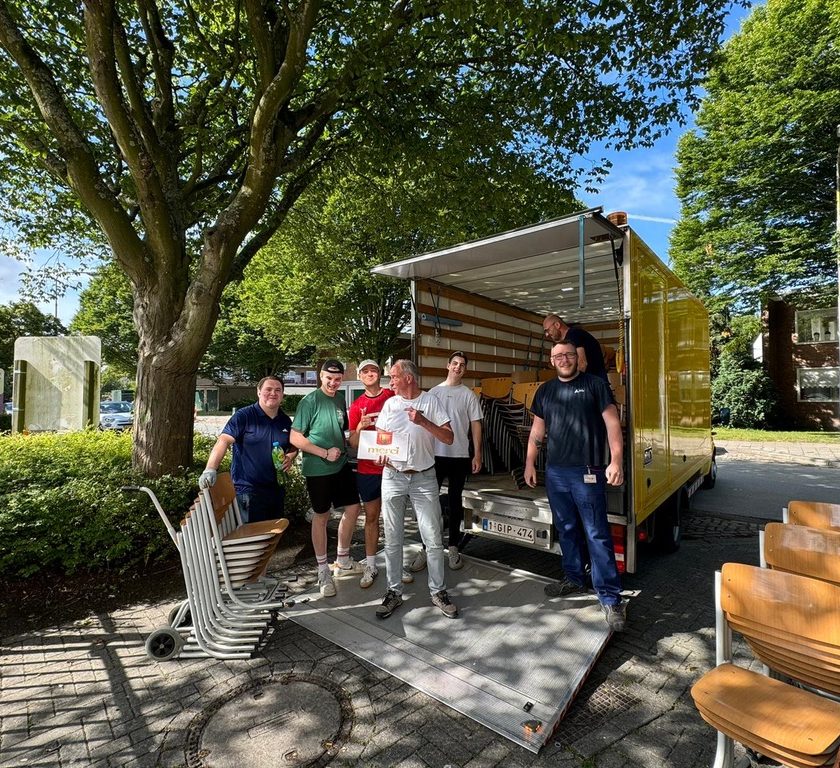Rob Smeets (PoAB) helps out on Mercy Ships hospital ship

Operations director of Port of Antwerp-Bruges Rob Smeets went on board hospital ship ‘Global Mercy’ as a volunteer. Besides analysing the supply chain, crucial for bringing ‘hope and healing’, he went through indelible experiences that he is happy to share with us.
Mercy Ships is an international charity organisation that brings hope and healing to the poorest of the poor in Africa. Many of them have no access to healthcare. From its base of operations in Tenerife, Mercy Ships deploys hospital ships as a platform for relief efforts. The ships ‘Africa Mercy’ and ‘Global Mercy’ call at various locations in Africa to address the highest needs.
“Port of Antwerp-Bruges has been supporting Mercy Ships for quite a few years, with fundraising and charity dinners. From a few tables this has grown to the entire Handelsbeurs in Antwerp or the ABC building in Zeebrugge,” says Rob Smeets, operational director of Port of Antwerp-Bruges.
“During the Corona crisis, shipping company MSC came to us asking if we could help equip the new ship ‘Global Mercy’. The ship had been delivered in China and the plan was to equip the ship as a hospital ship in the Philippines, but Covid threw a spanner in the works and they had to look for another location… and that became Antwerp.”
Kaai 602 Antwerp
The ship was given a festive welcome in Antwerp on Sunday 12 September 2021. After a parade along the Scheldt quays, it was given a place at Kaai 602, at the Nautical Operational Centre (NOC), where it was finished for six months. “The great thing was that the whole port community participated in it, all voluntarily,” Smeets recalls. “That gave the whole community a sense of belonging.”
“So the ship was sitting there right in front of me for a good six months and I wanted to see it in operation one day, but I didn’t want to do that without a purpose. Together with Bert Van Dijk, CEO of Mercy Ships Belgium, we came up with the idea that I would investigate the supply chain to and from the ship during a stay on board. My wife is active in education, so she could contribute from her expertise.”
Supply chain
In terms of capacity, the ‘Global Mercy’ is almost twice the size of the old ship. “That therefore means you have to provide twice as much equipment, not only medical equipment for the hospital itself, but also all kinds of things for the stay of the patients and volunteers on board. Besides the 250 patients and some 450 volunteers, there are also another 250 local people who are recruited for services of all kinds,” Rob Smeets explains.
Continue reading below the picture.

“You have to think of a ship like this as a big company that you have to keep operational, and you need a lot of stuff for that,” Smeets says. “For my supply chain analysis, I had to take some things into account. A ship like this does have some space on board, but it is not infinite. Moreover, not everything is sustainable either. So you have to make sure, on the one hand, that you know exactly what you have and, on the other hand, that you make a good estimate of what you are going to need. Moreover, orders via container are often 3 months in transit, so it’s important to plan ahead if you want to get your stuff on time.”
Sierra Leone
During Rob and his wife’s stay on board, the ‘Global Mercy’ was in Freetown, the capital of Sierra Leone. “A special experience, as the climate there is very hot and humid. Despite the difficult conditions in which the locals live there, they still remain positive, which really touched me.” Volunteers on board the ship there helped the local foundation to promote education (The We Yone Foundation).
Mercy Ships makes agreements with countries based on five-year periods. “A lot of preparations happen before a hospital ship docks, because from the moment the ship arrives, it has to be deployed as efficiently as possible. An extensive preparation period precedes it, where experts from Mercy Ships go into the country and select and prepare patients for surgery on the ship. A ‘hope centre’ is also set up ashore, where the pre- and after-care is done. That way, about 2,000 patients a year can be treated on board the ship during the field service period of almost a year.”
Continue reading below the picture.

Local people working on the ship also receive training there. “This way, Mercy Ships ensures that it is not a one-off story, but that the care and knowledge are also anchored and implemented further in the country.”
Continued commitment
Even after their return, Smeets and his wife remain committed to helping. From his analysis, Rob Smeets formulated some recommendations to improve the supply chain. “I created a report and presented it to senior management, and I also help them implement it further. Supply chain is an important process to bring hope a cure.”
“Also from here, my wife is helping a foundation that is working on a school building in Freetown. In early July, we loaded a truck here in Belgium with school desks, chairs, pencils, pens and so on. All items with destination Freetown.” Again, the port community is helping out. With the help of EDR, MSC and Sealiner, the items are shipped.
His volunteering on the ship is an experience Smeets would recommend to anyone. “It is extremely fun to do, but it is hard work because you do want to deliver something that benefits others in a relatively short period of two weeks. It’s gratifying to see that your contribution is appreciated and next steps can be taken. Everyone should do an experience like this once in their life, because afterwards you have fewer problems,” Rob Smeets concludes.





